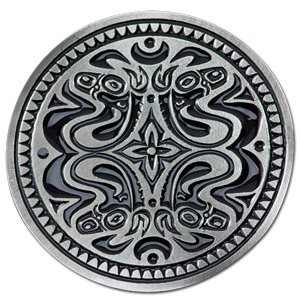The American food culture has weaned us off of these tasty and frankly very nutritious meats and replaced them with boneless skinless chicken breast, ground beef, and supermarket pork chops. Don't get me wrong, every food item has a place where it can shine, but I think people should venture out of their comfort zone a little and try something new. It won't hurt you, you might even like it! After all what's more gross: eating hot dogs (by the way when they say "All Beef Franks" on the package, that mostly means ground up and re-formed bull penis) or eating something like... sweetbreads!
Why are they called sweetbreads? Because if you saw them on a menu called pancreas and/or thymus gland then people would probably throw up a bit in their mouths. Here's my most recent journey cooking and enjoying this tasty offal. Maybe I'll inspire a few folks to try something new?! If so, you can follow my steps below for a real treat.
Step 1: Remove the sweetbreads from the package and give them a quick rinse under cold water. This is the step where most people will freak out a little. They are kind of soft and gooey and don't exactly look appetizing.

Step 2: This step is entirely optional, but it helps remove some of the blood in the organ itself which helps with presentation. Soak the sweetbreads in cold, acidulated (lemon or vinegar added) water for about 1.5 to 2 hours changing the water a few times.

Step 2: This step is entirely optional, but it helps remove some of the blood in the organ itself which helps with presentation. Soak the sweetbreads in cold, acidulated (lemon or vinegar added) water for about 1.5 to 2 hours changing the water a few times.

Step 3: Take the sweetbreads out of their soaking liquid and add them to a sauce pot containing clean water with the juice of one lemon and bring them to a simmer over medium heat. When the water begins to simmer cook them for 2 to 5 more mintues depending on their size. After the required time, remove them from the pot and plunge them into ice cold water. This stops the cooking process. Allow them to cool for a few mintues in the water.
 This is the sweetbreads in the ice cold water after simmering.
This is the sweetbreads in the ice cold water after simmering.
Step 4: We're finally done with all the water and all the pots! Now remove the sweetbreads from the chilled water and remove any fat, connective tissue, veins, sinew etc. that is on the surface of the sweetbreads. I've never had any significant problems with this, I think the sweetbreads I buy are already fairly well cleaned.
Place the sweetbreads on a plate lined with a thick wad of paper towels or a kitchen towel. Place another plate on top and then place a weight on top of that to press the sweetbreads (canned goods work well here). This step removes some of the water and firms the sweetbreads. It is also optional but without this step you will end up with a more spongy, less desirable (in my opinion) texture. Put them into the refrigerator for at least 2 hours or up to 24 hours.

Step 5: Cook! This is where you can get creative. Sweetbreads are very versatile and can be cooked via several applications. Common methods are to fry them, saute them, grill them, or braise them. I find that when sauteed over high heat with butter or bacon fat, they are superb. I like the thin, brown crispy exterior contrasting with the creamy interior. Grilling would also work nicely. With mine, I dusted them in flour and sauteed them in butter.

Step 6: Enjoy! Now I'm not the best at presentation, so bear with me here, but I served the sweetbreads for our Saturday lunch over a mixed greens salad with grape tomatoes (most of the tomatoes are hiding) dressed with extra virgin olive oil, a balsamic vinegar reduction, and salt & pepper. On the side is a sliced bosc pear and a couple slices of toasted and buttered baguette. Hey, Olivia ate it so it can't be that gross...


